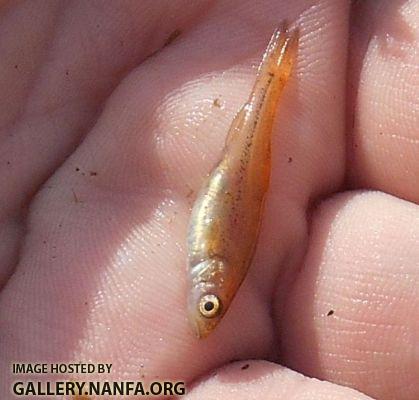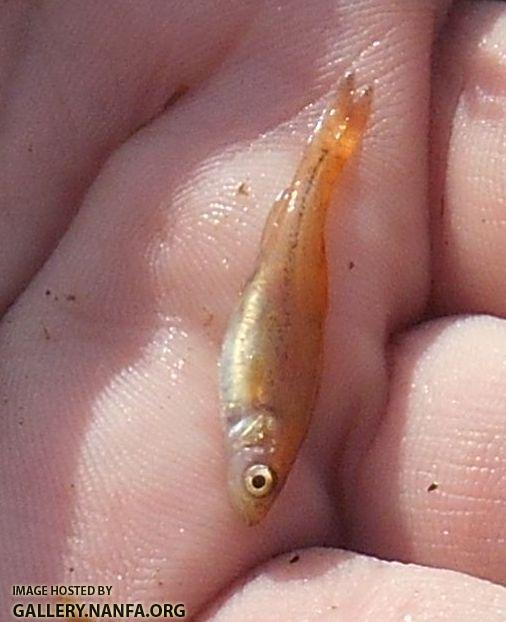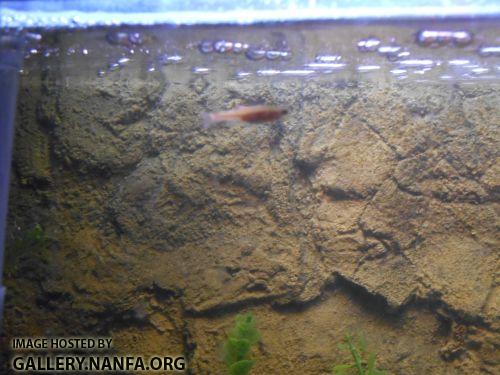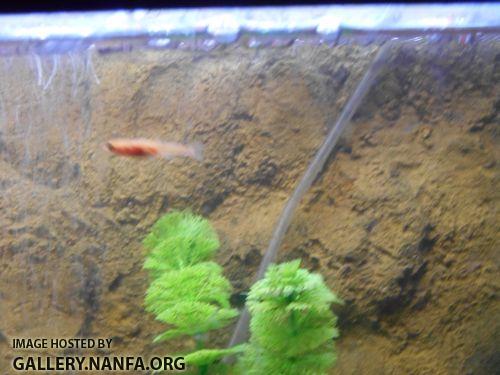

Posted 28 June 2014 - 08:34 PM


Posted 28 June 2014 - 08:52 PM
Posted 28 June 2014 - 08:57 PM
Posted 28 June 2014 - 11:39 PM
Posted 29 June 2014 - 07:45 AM
Posted 29 June 2014 - 11:31 AM
The overall look is somewhat of a Notropis to me, but I do not know the fish in your range. Even at that small size (two finger widths) I would expect to see the spot at the base of the dorsal fin on a creek chub (but that may be masked by the overall light color and the fin clamp of a fish-in-hand photo). Did you see anything on the dorsal fin or do you have another picture?
Posted 29 June 2014 - 09:58 PM
Posted 29 June 2014 - 10:11 PM
Not a creek chub, wrong shape. Could it be a young rosyside dace? Only about 50 miles from invasive rosyside dace population. I don't recall exactly how they look at 1.25 inches or so.
Posted 29 June 2014 - 10:44 PM
Posted 30 June 2014 - 10:38 AM
Posted 30 June 2014 - 09:00 PM
Posted 01 July 2014 - 04:31 PM
Edited by mikez, 01 July 2014 - 04:35 PM.
Posted 01 July 2014 - 04:38 PM
Posted 01 July 2014 - 08:21 PM
Posted 01 July 2014 - 10:04 PM
The caudal fin would have to be rounded not forked as well and breeding males are jet black. 3 and 2 spine stickleback males get some red. Also generally brook sticklebacks will show at least some spines when held. Though Josh may well be a fish whisperer so they relax in his hands. This sounds like a good excuse to plan another NH trip Josh. I'll be on vacation through July 7th soIf the caudal peduncle were a bit thinner, I would've said Brook Stickleback. Breeding males can be red. Hmmm. I don't know.
Brian
Posted 01 July 2014 - 11:19 PM
I live close enough to be pretty familiar with most of the local stuff, even the rare stuff [my avatar is a bridle shiner]. So I say all that to just say,...that one stands out as obviously not anything I've seen before. The body shape is different and the big predatory looking mouth and big eye stand out from the shiners I'm familiar with. I'll be very interested to see more pics if it settles into captivity.
Forgot to say, never seen redbelly dace or the other, invasive one in person, so can't rule them out based on my familiarity scale. Is that a direct trib to the Connecticut? Could be anything if so, even juvie marine species.
The caudal fin would have to be rounded not forked as well and breeding males are jet black. 3 and 2 spine stickleback males get some red. Also generally brook sticklebacks will show at least some spines when held. Though Josh may well be a fish whisperer so they relax in his hands. This sounds like a good excuse to plan another NH trip Josh. I'll be on vacation through July 7th so
maybe after that? Mike care to join us? Or anyone else in the area?


Posted 02 July 2014 - 06:26 AM
Posted 02 July 2014 - 08:07 AM
Posted 02 July 2014 - 01:11 PM
why do you keep disregarding that it could be the most commonly sold baitfish, or it's slightly less popular red version?
Posted 02 July 2014 - 01:22 PM
0 members, 0 guests, 0 anonymous users